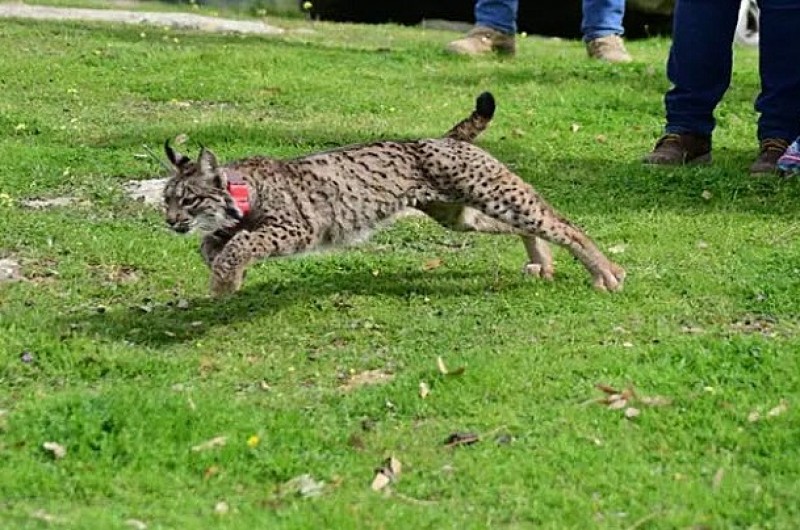

- EDITIONS:
 Spanish News Today
Spanish News Today
 Murcia Today
Murcia Today
 Alicante Today
Alicante Today
ARCHIVED - Iberian Lynx released in Sevilla as part of reintroduction programme; Life Lynx Connect
The Andalusian authorities are part of the Life Lynx Connect programme, which is working to re-introduce species of the threatened native breed into the wild and create safe areas for colonies to grow and thrive.
A one-year-old male Iberian Lynx was released into the wild at the weekend at Los Jaralejos y Dehesa del Monte Bajo in Seville. The lynx, called Risco, was born in 2020 at the Zarza de Granadilla breeding centre in Cáceres (Extremadura) and is wearing a collar with a transmitter, which will allow members of the Life Lynx Connect programme to keep track of his progress and welfare.
This was the third of the threatened species to be re-introduced into the wild in just a few weeks, following the recent release of two lynx in Guarromán (Jaén). The Andalusian authorities hope to manage, through re-introduction programmes, to create small settlements of lynx between the larger population groups to encourage them to mingle and interbreed, improving the genetics of future generations. Risco has been released near the area where Osuna, a female lynx from Montoro in Córdoba that successfully delivered a litter of four kittens last year, has settled.
The Sierra Morena mountain range, which stretches across much of northern Andalusia, is considered to be an excellent habitat for the endangered species as there is a high density of rabbit population, which the felines feed on. However, they compete with hunters for this prey, which at times leads to conflicts. There have been many reports of lynx having been shot to death, the most recent just last week in Doñana (Huelva) when a lynx’s body was found floating in a river with bullet wounds to the shoulder.
The Life Lynx Connect programme was launched on 1 September 2020 by the Andalusian government, together with another 20 partners; the new recovery programme with a budget of more than 18 million euros aiming to consolidate the re-introduction of the species and build upon the work undertaken in the original Life Iberlince project.
The project is a complex, transnational one in which the environmental authorities from 2 countries (Spain and Portugal) and 4 Spanish regions (Andalusia, Castilla- La Mancha, Extremadura, and Murcia) are taking part together with public and private companies and NGOs from the environmental sector and a foundation within the hunting sector. Its main goal is to achieve a self-sustainable and genetically viable population by consolidating the subpopulations currently in existence: two in Andalusia, two in Castilla La Mancha, one in Extremadura, and one in Portugal. It is implementing various actions based mainly on the genetic management of the species, developing tools to facilitate this management and make it sustainable in the long term.
The Iberian lynx population in Andalusia now comprises more than 460 specimens currently on the census, mainly in the Doñana-Aljarafe and Sierra Morena areas. Altogether 122 Iberian lynx have been released into the wild in Andalusia, 90 of them from captive breeding centres and the other 32 relocated from other areas. Jaén’s Guarrizas area, where 58 of them were released, is the one to have registered the greatest lynx population growth since reintroductions began in 2010.
There are many obstacles in the smooth progress of this project, the number of animals killed in road accidents and by hunters the biggest issues faced in the re-introduction programme. Significant work has been undertaken to create safe “corridors” to enable the lynx to live in areas divided by major road connections and to ensure work within the hunting community doesn´t bring the animals into conflictive competition over the supply of their principal food source; rabbits.
Saving this magnificent native species from oblivion in the wild is a slow fight against the imprint of humanity, but so much resource is dedicated to making this programme a success, that hopes remain high that the lynx can successfully re-establish sufficient numbers to ensure its survival in the future.





















